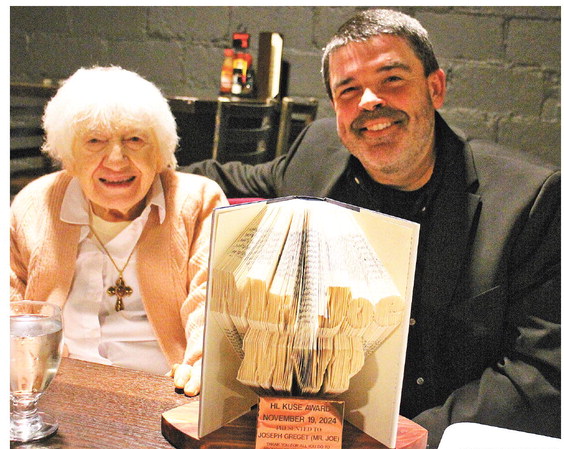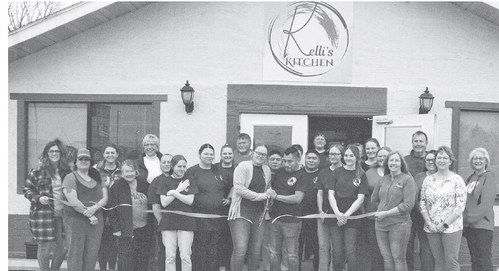County committee cool to carbon credits
Members concerned about 40-year contract length, potential restrictions
A proposal to contract with an outside company to sell carbon credits based on county forest acreage will go to the full county board without a recommendation from the forestry committee.
Earlier this year, the county was approached by the Climate Trust wanting to enroll the county forest acreage into the carbon credit program and serve as the broker selling the credits on the market.
Carbon credits are an initiative to use market forces to reduce overall pollution. Companies have goals to reduce their carbon footprint and can do so by purchasing carbon credits which are typically on woodland areas with long-term contracts in place to keep them in woodland use with monitoring done to ensure that happens.
At its best, Taylor County residents could see a windfall of outside new revenue for doing little more than what they are currently doing under their long-term plans to manage the county forest. At the worst, the county could be saddled with additional requirements, costly monitoring for decades to come and loss of control over forest management.
At Friday’s county forestry and recreation committee, committee members weighed the cost versus benefit of taking part in the program, as well as hearing concerns about the perception of appearing to support a green initiative.
The discussion was posted to possibly go into closed session for negotiation purposes, but chairman Scott Mildbrand said he was uncomfortable with discussing it behind closed doors. “I don’t think it meets the criteria of negotiating,” Mildbrand said. He said that ultimately it would be a decision of the full county board.
Forest administrator Jake Walcisak said the meeting was posted that way to give the committee the option to go into closed session, but there was nothing obligating them to do so.
Committee member Rollie Thums supported keeping it in open session. “I don’t have a problem saying ‘No’ today. I have no fear of talking about it in open session,” he said.
Committee member Gary Beadles said there should be transparency in this. He also noted that the possibility of additional revenue from the sale of carbon credits had been raised as a possible funding source for the additional ambulance expenses that are projected for the county in coming years.
Mildbrand noted the county was able to triple the money to the ambulance service in the 2024 budget and do all the other things in the budget and continue to pay for Internet expansion efforts and still keep the tax increase below 5%. He said he did not see the county needing the carbon credits to pay for the ambulance service. “I think we would be OK,” Mildbrand said.
“It would help down the road,” Beadles said of the additional non-tax revenue the program could bring in, citing the need for road programs and potential for increased wages.
Walcisak said the county may want to talk about some of the financial details in closed session about the potential cost and revenue split between the county and the Climate Trust should the project advance to that point. “Those would be negotiating type points to consider,” he said.
According to Walcisak, nine counties, including about 40% of all county forest land in the state is currently enrolled in carbon credit programs.
Mildbrand said he was against going with the carbon credit program over concerns it would tie up the county’s management of the forest. “40 years is a really, really long time,” he said.
The county is projected to see a potential of $6 million in revenue from the sale of the credits, with the bulk of that up front, and the remainder spread out over the first 20 years of the plan. In the second 20 years, the county would have monitoring and reporting expenses but would not get any new revenues from it. Given the time value of money, finance director Larry Brandl said the actual buying power of the funds over time will be about $4.8 million in today’s dollars. At the $6 million level, it works out to a potential of about $150,000 of annual revenue over the next 40 years.
Mildbrand said he opposed the language in the Climate Trust proposal referring to language that would seek to “transform the economy to value our climate.”
“I don’t agree with any part of that statement,” he said, expressing concern about the politics behind the contract language.
There was some question about what the language actually means.
Others on the committee expressed concern about the length of time involved, noting 40 years was a long time. Some said they could see supporting it if it was a 20 year contract. There was also concern raised over tying the hands of future boards because it would be potentially costly or impossible for the county to get out of the program once it was in place.
Walcisak noted the contract includes penalties which would require repayment if the county broke the contract down the road.
Beadles said he was less concerned with the length of the contract, he compared it to the length of time it takes for a hardwood tree to get to mature growth to be harvested. “How long does that take - 80 plus years,” he said, noting the contract length would be only half as long to grow a saw log.
“Forty years is nothing to the trees because they are only half grown,” he said.
“There are just so many questions, so many unknowns,” Mildbrand said of the ongoing future monitoring expenses and what that might require of staff in the future.
Walcisak said the way these have been modeled elsewhere is to set aside a specific amount in escrow each year to have the funds available to pay for the second 20 years when there is no revenue coming in.
There was also a concern that the rules could be changed to require additional unplanned expenses and obligations for the county.
Walcisak said Bayfiled and Washburn counties were early adopters of the carbon credit programs and saw it as a way to offset reductions in logging revenue due to the closure of paper mills in the state. “My crystal ball is that we won’t be able to generate revenue like in the past,” he said, noting this would be an option to continue to get income from the county forest over time.
Rather than make a recommendation from the committee, the consensus was that the decision needed to be made by the full county board. Committee members approved having it brought to the county board with a presentation to get information about the proposed program and give board members time to review and digest the information before making a decision sometime in early 2024 at a potential special meeting.
Chelsea Dam
Work on the Chelsea Lake Dam project is substantially complete with crews awaiting grass to take hold before the removal of silt fencing near the dam.
While the majority of bills for the grant-funded project have been paid, committee members feel the primary contractor should be on the hook for additional engineering expenses due to the need for additional project oversight.
They directed Walcisak to keep $5,000 out of the final payment to the contractor who worked on the Chelsea Lake Dam project and consult with the county’s attorney about how to proceed after the engineer on the project submitted a bill for additional site management supervision hours due to concerns over the work being done by Pember, the contractors who did the project.
Project engineers Ayres Associates told the county they had to have staff on site three additional times during the dam project in order to ensure the work was being done to plan specifications. Walcisak said the contractor failed to regularly meet contract requirements.
Mildbrand said he felt Ayres should be reimbursed for the additional work and suggested the county could split the difference with Pember.
It was noted that the overall dam project was done satisfactorily and meets project specifications. The new dam and spillway structure is projected to have an 80 year lifespan.
Thums opposed having the county pay anything additional for the project saying that it should be the contractor’s responsibility to pay Ayres for the additional time. “Taylor County did not do anything wrong. We didn’t make an error in judgment,” Thums said, noting the contractor’s action necessitated having Ayres come back to keep the contractors in line.
As of Friday’s meeting, the county still had about $32,000 in final bills to be paid to Pember. Gebauer suggested the county withhold $5,000 of that payment and consult with attorney Courtney Graff about the county’s options going forward.
Walcisak said the recent rains are helping bring the lake level back up to the set elevations. As of Friday, the levels were at about 1,531 feet of elevation which is below the set elevation for the dam spillway. It is expected additional rainfall will fill to that spillway height this fall and winter.
Committee members also received an update on the Camp 8 dam project.
The county and local sportsman groups have been looking at making habitat improvements to the flowage there, but the work was not done prior to the dam being completed and the water level beginning to rise.
Walcisak said there is still strong interest in doing this and the plan is for four fish cribs to be placed on the lake this winter. They are working with the local group to complete the details.
Camp 8 had been drawn down 16 feet during the construction and has regained 10 feet of that depth. Walcisak cautioned that the water will not be at pre-work depth until the winter break-up next spring because the remaining surface area is wider than the comparably deeper pools and channel.
In other business, committee members:
Received word that the county had once again received the State Forestry Productivity Award. This is the sixth time in a row that Taylor County has received the award, double the previous record of three years in a row set by Bayfield County. Walcisak noted that between his time working in Florence County and since coming to Taylor County, the award has sat on his desk for eight of the past 13 years. He said a lot of things contribute to the county being able to continue to maintain quality timber sales including proximity to markets and high quality local loggers. He cautioned that the coming year will likely be less in stumpage revenue than in previous high years, but was optimistic that prices appeared to be stabilizing.
Received an update on active timber sales and what is being planned to be put out for bids in November. The county will be putting out three new sales totaling 379 acres and an additional sale of 80 acres that will be a resale of a portion of a project that had been taken back after issues with the contractor last year. The county retains a $25,000 bond on that last project and depending on the stumpage price of the re-bid will use a portion of the bond to cover county loss.




